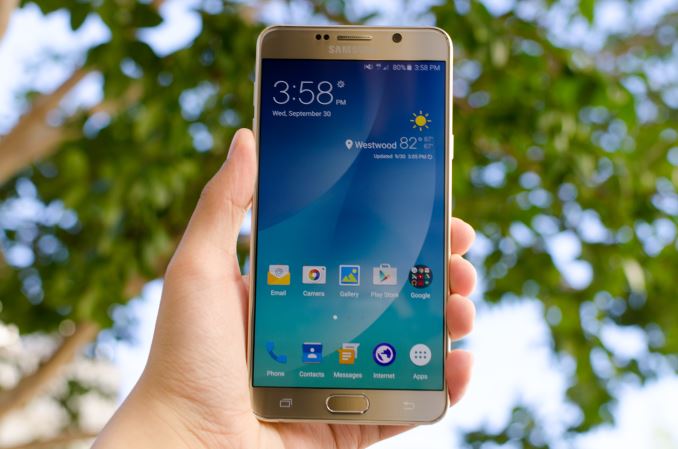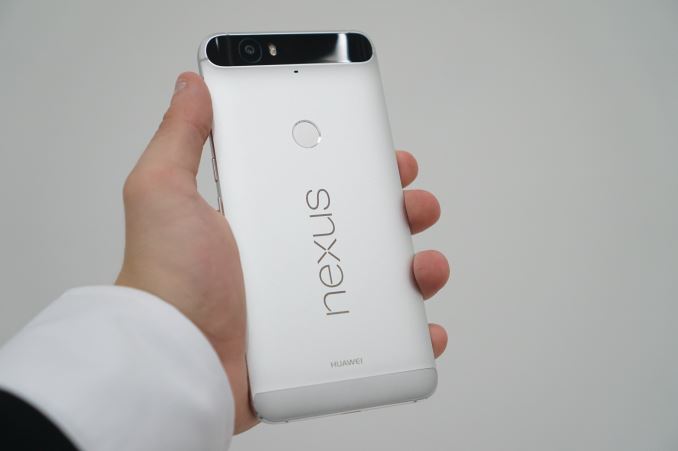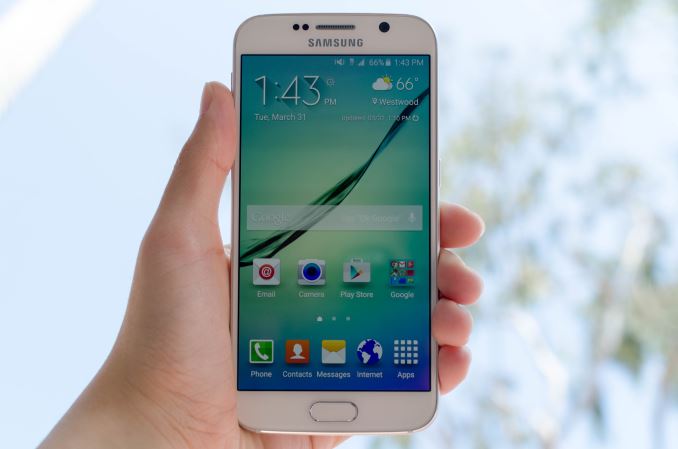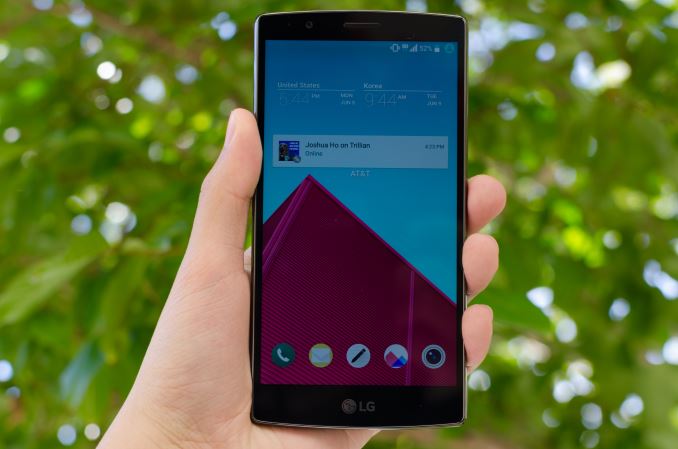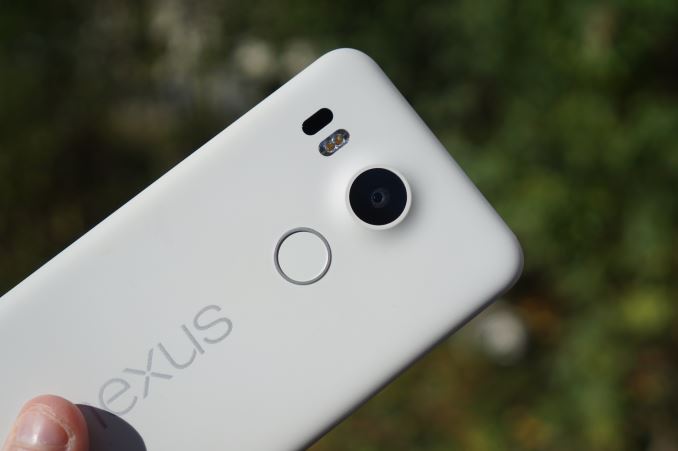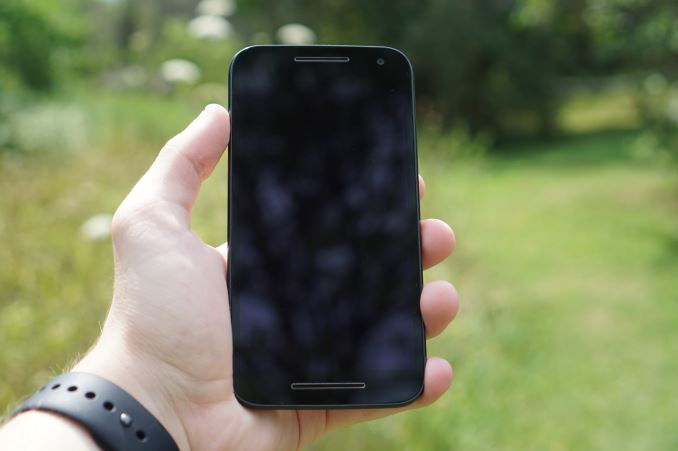I remember not that long ago thinking that a 4.7-inch phone screen was pretty large. How could they get bigger than that and still be usable? Surely this is the end of the road... and here we are a few years later and the Xperia Z5 Compact is considered diminutive at 4.6-inches. When I say this phone is small (and it is) I mean it's small compared to every other Android flagship.
Consumers have voted with their dollars and told OEMs they want big phones, leaving the Xperia Compact series as your last bastion of tiny flagship phones. When a device basically owns a niche, it doesn't have to be amazing, it just needs to be. You want a small phone? This is it, but that's not necessarily a bad thing. The Z5 Compact is a nice phone.
DesignLike most of Sony's phones, the Z5 Compact is a flat rectangle with little in the way of ergonomic niceties. The rear panel is a smooth piece of aluminum, and the edges are slightly rounded matte plastic. It's still a pretty boxy little device, though. If someone scraped the logos off the Xperia Z5 Compact you'd probably still be able to tell it's a Sony device, and I don't mean that in a particularly good way. It comes in several colors, including black white, yellow and (like my review unit) pink... I mean, coral (sure, Sony). The overall aesthetics are competent, and that's it.
The Z5C is a little thicker than other flagship phones at 8.9mm, but that's because there's less surface area to lay everything out in. It needs to be a little thicker to accommodate the components. The bezel is pretty narrow at least. The device is small enough that I can get my fingers around the edges and reach almost the entire screen with my thumb. No uncomfortable stretching or repositioning required. I think this is probably the primary selling point of the phone—it's little.

Z5C with the GS6
The Z5 Compact is water-resistant like its predecessors, but there are a few refinements here. For example, Sony now has an exposed microUSB port on the bottom of the phone that's still water resistant. The Z3 Compact had the USB behind the sealed port cover. There's still a port cover on the Z5 Compact (left edge), but it's actually just housing the SIM card and microSD card slot. The flap itself is thick and not too rigid, so I don't feel like I'm going to snap it off when I open it, but you shouldn't have to get in there too much.
All the physical buttons on this phone are along the right edge, and they're a little strange. Around the midpoint is the power button with a built-in fingerprint sensor (I'll get to that later). Below that is the volume rocker, and below that is a camera shutter button. Keep in mind this phone only has a 4.6-inch screen, and the volume rocker is below the power button. It's about three-quarters of the way toward the bottom of the phone, which is not comfortable in the slightest. You have to reposition the phone to change the volume with your thumb. Even the power button in the middle is a little awkward for me with average size hands. The camera button makes sense as you'll probably be holding the phone in landscape when you use it, so that's the top corner where a shutter button ought to be.



Despite the small footprint, Sony managed to cram in some competent front-facing stereo speakers. They aren't as good as what you get on the Nexus 6P, but they kick the crap out of all those phones with bottom-firing mono speakers. There's very little bass (of course), but the volume goes pretty high and there's very little distortion. I'm impressed.
DisplayThe screen is the defining characteristic of the Z5 Compact. It's only 4.6-inches and has a resolution of 720p. In an age of 1440p (and even 4K on the Z5 Premium), a measly 1280x720 resolution doesn't look very impressive on a spec sheet. There are a lot of markets where this phone is a non-starter simply for that reason, but in practice, this is what some users are asking for—a small phone with a screen that won't destroy the battery.

Sony gets away with using a 720p resolution because it's a small panel. The pixel density is 319 ppi, which isn't bad. It doesn't look quite as good as a 1440p panel when you've got one to compare to, but it's not a huge deal in real world usage. The display is right up against the glass and has excellent viewing angles. You can get way off-axis without and color distortion or dimming. The display does get very bright, so it's fine outside. The minimum brightness is nice and low too. I do quite like that it uses the standard Android adaptive brightness mechanic.
Sony is fond of talking up its Triluminos display technology, which uses a blue LED backlight and quantum dots to produce cleaner colors. The result, according to Sony, is a 50% larger color gamut than conventional LCDs. For an LCD, the colors on this screen do look nice. It doesn't have the same pop as a nice AMOLED, but it looks better than most other LCDs I have around. Sony also has a software processing option called X-Reality for photos and videos. This is accessible in the settings, and bumps up contrast and saturation. The difference seems subtle in most instances.
Fingerprint SensorEveryone's hopping on the fingerprint reader hype train, Sony included. On this device, it's built into the power button, which again, is on the right edge of the phone at about the midpoint. I feel the need to point out again this is a little low for the power button on such a small phone, but having the sensor in the power button is smart. It's a bit like the LG V10 (or GS6, but that's a home button). You press the button and just leave your finger there for a moment longer to get the phone to unlock.

The speed of the sensor is good, but not supernaturally fast like it is on the new Nexus phones. Accuracy is questionable, though. It's not bad, but I've become accustomed to the quality of the recognition on the Nexus phones, which never seem to misread a print. Those phones have no trouble reading a fingerprint in any orientation, but if you touch the Z5C's sensor at an unusual angle, it's probably going to reject you at least once.
This phone runs Android 5.1 Lollipop, so the fingerprint reader won't have access to the APIs that were introduced as part of Android 6.0. So, apps and Google services won't be able to plug into this sensor, and it won't count as a secure unlock method for Google services. Adding prints to the Z5C also takes a much longer time than it does on phones like the Nexus 6P. When the Z5 Compact gets an Android 6.0 update, this won't be an issue (I hope), but we have no way of knowing when that's going to happen.
CameraSony makes most of the high-end image sensors used in flagship smartphones these days, but camera performance in its own phones hasn't been a match for the likes of Samsung and LG. This is down to software processing for the most part. The results I'm getting from the new 23MP Exmor sensor seem better than the Z3 family, but there are still a few issues.

The first thing to know about Sony's camera is that while it's 23MP total, the default setting is to capture 8MP images with oversampling in the "superior auto" mode. For most people, this will be the right resolution to shoot in. The software is optimized to take the data for a 23MP 4:3 frame and render it at 8MP 16:9. This produces better results most of the time with improved dynamic range and colors, at least in my testing.
You can enable full resolution 23MP mode to get more detail, but the software seems to lag a bit when you do this. Maybe you could use full resolution mode if your subject is stationary and you really want to get as much detail as possible. The oversampled mode also allows you to zoom in without losing resolution in the final image, which is really cool. The first set of pics below are all 8 MP, and a few full resolution shots are below.
In outdoor light, the Z5 Compact takes some of the finest images I've ever seen a phone produce. The colors are accurate, detail is great, and image stabilization is good enough (this is electronic rather than optical). The software (in auto mode) keeps the ISO very low for clean images, and the capture speed is snappy. When the light starts to get low, the Z5C aggressively ramps up the ISO to keep things bright, and that causes noise as well. In low-light, we're talking about ISO values between 1500 and 2000. I'm just a little disappointed in this phone's low light photos after using phones like the Galaxy S6, Nexus 6P, and LG G4. They all seem to do better in low light situations.
I am slightly annoyed that there's not a simple way to turn on HDR mode. The phone is supposed to do this for you in auto mode, but if you know you want to force an HDR shot, you need to flip to manual mode, then change the scene setting. That's a few extra steps than other phones.
Sony says the Z5 Compact can focus on a subject in a quarter second (or 0.03s, depending on the page you're looking at), and there's no fancy laser sensor on the back. In my testing, it is actually surprisingly fast. As soon as you tap on an area of the screen or move the camera, it instantly recognizes the focal point and snaps to it. I'd say it's closer to a quarter second, but it's very reliable.



23MP shots to compare with above
The physical shutter button is less common these days, but Sony continues to do it. This is a two-stage button, so pressing halfway focuses and the next step snaps a photos. The button is soft enough that you won't jostle the phone too much when taking the pic. Lastly, the Z5C does support some settings in the camera2 API, so you can use a third-party app to get some good shots if you like.
Battery LifeWe're used to seeing 3000mAh and higher capacity batteries in flagship phones these days, so what's the deal with Sony only putting a 2700mAh battery in this $500 phone? Well, it doesn't really seem to need a bigger one. Battery life is roughly the same as the Z3 Compact, which is good.

50% left and over 4 hours of usage. 8 hours on a charge is doable.
Sony claims two days of usage, which I think is fair if you use a device lightly. I'm seeing around 4 hours of screen-on time over the course of about two days. With heavier usage, the phone last a little over a day with around 8 hours of screen time. Compare that to a Galaxy S6, which gets around 4 hours in a day if you're lucky. That 720p screen might not look as good on the spec sheet, but it doesn't annihilate the battery like a 1440p one does.
Sony also has Stamina Mode, which is a little like Doze in Android 6.0. Apps will be suspended when the phone is asleep, but the system won't recover as elegantly and apps won't get a chance to sync until you wake the phone up. Then there's Ultra Stamina Mode, which disables almost all features other than messaging and phone. The Z5 Compact supports Qualcomm Quick Charge 2.0, so you can fill the battery up in a snap.
Software And PerformanceBefore we get into the software, I should point out that my little pink review unit is an international model. That means whenever the Z5 Compact does officially come to the US, its software might be slightly different. That said, very little has changed with regard to the Z5C's software compared to past Xperia flagship phones. This is Android 5.1 with a very light skin. The home screen doesn't do anything wacky or ill advised, like for example, adding a completely useless and laggy Flipboard panel to the left most page (looking at you, Samsung). I'm not over-the-moon for Sony's icons, but they're less annoying than I remember them being a year or so ago. The app drawer defaults to a custom/stupidly random layout, but that's a quick fix.



There are several UI decisions that I personally find grating. I'm nitpicky about this sort of thing, but the navigation buttons don't seem to have a consistent scale. Sony has a house icon in the middle for "home" instead of a circle, but it looks slightly too large. That makes the overview button to the right look tiny. Props for putting them in the right order, though (again, looking at you, Samsung). I will also never understand why Sony defaults to bright blue for the status bar color in apps that don't have Lollipop-themed bars. Every other phone uses black, which is much less likely to clash.
The notification drawer is mostly stock, but you have an easily accessible option to change what's shown in the quick settings. Likewise, you can control what shows up in the status bar. Don't want the alarm or Bluetooth icon there all the time? No problem. These are both things that Google added in Marshmallow, but Sony has had them in the last few revs of its software.

The blue status bar. Why, Sony?
So, there aren't a lot of problems with Sony's software, but I can't really think of anything that makes me want to use it over stock Android. The only really distinctive feature built into Sony's Android 5.1 build is the "small app" platform, which lets you open select apps in a floating window. It's interesting in theory, but this screen is so small that it's really pointless to do anything other than full-screen mode.
As mentioned above, the Z5 Compact is powered by a Snapdragon 810 and 2GB of RAM. I'm a little concerned about having only 2GB of RAM in a phone that costs upward of $500. The Nexus 5X only has 2GB, but it's a few hundred dollars cheaper. That said, it doesn't seem to be causing any noticeable performance issues. Apps are staying in memory well and I can play audio in the background while running navigation or browsing the web without anything getting killed. Still, depending on what Sony does with the software going forward, you might wish you had that extra gig of RAM.
The Snapdragon 810 has the potential to be too much for the little Z5C to handle. There were a few phones earlier in the year that didn't run very well with the 810. For example, the HTC One M9 would get hot and throttle aggressively. Sony's own Z3+/Z4 also had heat issues to the point that some Japanese carriers recommended against charging it while it was on. To check for this, I ran some 3D games and benchmarks on the Z5C to stress the Snapdragon chip.




Four benchmarks (left to right) showing thermal throttling of the Z5C. It could be worse.
It doesn't overheat as quickly or consistently as the M9 did, but it does start throttling eventually. It's about on par with the OnePlus 2. It will slow down, but not immediately and not to the point that it gets unusable. There is a proactive warning when you start a 4K capture the first time that tells you the camera may close unexpectedly if temperatures get too high. So there's that.
ConclusionIn a lot of ways, it doesn't matter whether this phone is perfect or if it stands up to larger flagship phones. It rules the small phone niche right now. All it really has to be is competent for people to buy it, because those people really want a small phone. The good news is that the Xperia Z5 Compact is better than competent. It's a very good phone thanks to the solid water-resistant design, excellent battery life, and above-average camera.

It has its flaws, but none of them are deal breakers—more RAM would be nice, and perhaps the Snapdragon 810 wasn't necessary for a phone that has a 720p display. Still, if you want a sub-5-inch phone, this is the best one out there. It could be substantially worse and still hold that title, though.
Note: Our Xperia Z5 review will be up in a day or two.
Source: Sony Xperia Z5 Compact Review: The Only Small Phone That Matters








